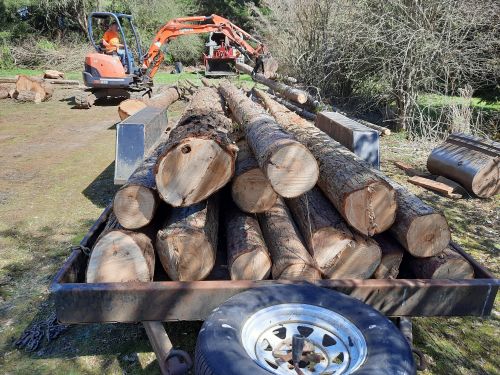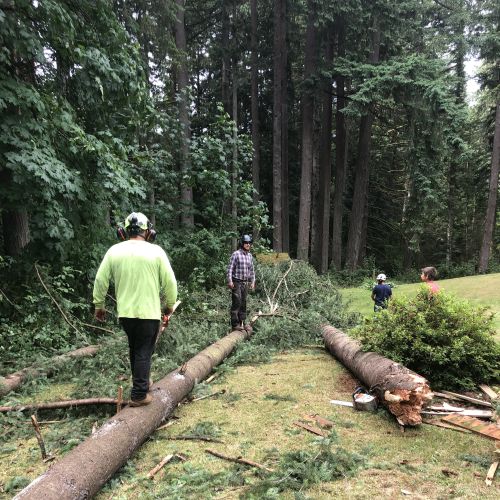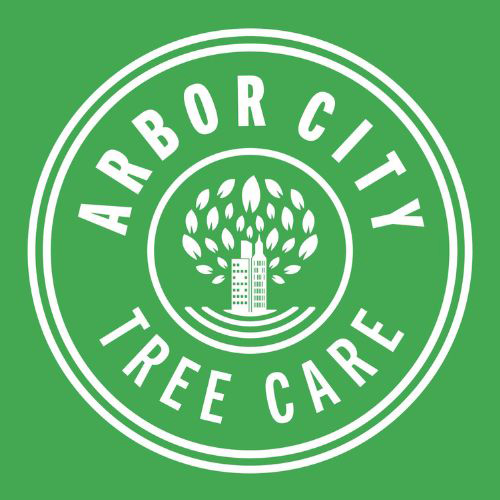Preparing Your Property for Development
Land clearing is an essential step for construction, landscaping, or agricultural projects. Proper planning, execution, and post-clearing maintenance ensure your property is safe, accessible, and environmentally responsible. Understanding the land clearing process, necessary permits, environmental considerations, and maintenance requirements is critical for homeowners, developers, and contractors in the Pacific Northwest.

The Land Clearing Process
Land clearing involves removing trees, vegetation, shrubs, stumps, rocks, and debris to prepare a site for construction or other uses. The process generally includes the following steps:
1.) Site Assessment
Evaluate the property to identify trees, slopes, drainage issues, and sensitive areas such as wetlands or streams. This assessment helps determine the clearing method and machinery needed.
2.) Obtaining Permits
Local regulations often require permits for tree removal, grading, or clearing near waterways. Check with municipal or county authorities to ensure compliance.
3.) Vegetation Removal
Depending on the project scope, this may involve manual clearing, brush cutting, or heavy machinery such as bulldozers or excavators. Trees and large stumps are often removed or ground into mulch.
4.) Debris Management
Proper disposal of removed vegetation, rocks, and stumps is crucial. Options include chipping, hauling to a landfill, or composting when appropriate.
5.) Grading and Soil Preparation
The site may require leveling, soil compaction, or erosion control measures to prepare for construction or landscaping.
Permits and Regulatory Considerations
Before clearing land, it is important to understand local, state, and federal regulations:
Tree Removal Permits
Many municipalities require permits for removing certain tree species or large trees.
Environmental Protections
Areas near wetlands, streams, or protected habitats may have restrictions to prevent ecological damage.
Erosion & Stormwater Management
Clearing can increase erosion risk, so proper planning and erosion control measures are often legally required.
Working with the licensed contractors at Arbor City Tree Care who understand permitting requirements can prevent costly fines and delays.
Ready to Start Clearing Your Land?
Call the Experts at Arbor City Tree Care today!
Environmental Impacts
Land clearing can have significant environmental consequences if not managed responsibly:
- Soil Erosion: Removing vegetation exposes soil to rain and wind, increasing erosion risk.
- Habitat Disruption: Clearing can displace wildlife and affect local ecosystems.
- Water Quality: Sediment runoff into streams or lakes can impact water quality.
Mitigation strategies include leaving buffer zones around waterways, using erosion control mats, replanting vegetation post-clearing, and minimizing tree removal where possible.
Post-Clearing Maintenance
Proper maintenance after clearing helps stabilize the land and prepares it for its intended use:
- Erosion Control: Apply mulch, seed cover crops, or install silt fences to reduce erosion.
- Soil Improvement: Test soil quality and amend with fertilizers or organic matter as needed to support future landscaping or planting.
- Debris Management: Remove leftover debris promptly to maintain safety and aesthetics.
- Replanting and Landscaping: Consider replanting trees or shrubs in non-construction areas to restore habitat and reduce environmental impact.
Regular monitoring and maintenance prevent erosion, pest infestations, and other post-clearing issues that can affect long-term property health.
Safe, Efficient, and Eco-Friendly Land Clearing
The land clearing process requires careful planning, regulatory compliance, and consideration of environmental impacts. From obtaining permits to managing debris and maintaining the cleared site, each step is essential to ensure safety, efficiency, and ecological responsibility. By following best practices and engaging experienced professionals when necessary, property owners can prepare their land for construction, landscaping, or agricultural use while minimizing negative effects on the surrounding environment. Proper post-clearing maintenance ensures your property remains safe, functional, and ready for its next phase of development.

